What is Stigma?
Stigma is a mark of disgrace that sets an individual or a group apart. It’s a label. A stereotype. A pre-judgment before getting to really know the person and the details of their situation. Stigma leads people to reject, avoid, or fear those they perceive as different. We’ve all seen stigma in action, and probably experienced it ourselves as well.
There are lots of different kinds of stigma. At Change to Chill, we’re concerned with stigma about stress and related problems such as anxiety, depression or other mental health conditions. We also know there can be stigma about things people do to take care of themselves, such as meditation or breathing exercises. Some people think those things are silly or really weird. But we know they are really awesome…and we’re out to convince others of the same thing!
Be a part of helping in the fight against stigma!
Click below to check out some facts and conversation starters about stigma and start being the change today!
You’ve probably seen a dentist at some point in your life. Most Americas do. Culturally we consider it important to get regular checkups and preventative cleanings. As soon as a baby’s first tooth breaks through, parents are encouraged to start teaching them about brushing and flossing. When a toothache sets in, most people go get checked for cavities. Some people don’t enjoy seeing the dentist or find brushing and flossing annoying, but almost everyone does it! In fact, there’s often stigma associated with notdoing these things.
So…what does all of this have to do with mental health? In a word: Normalizing. One in five people will experience a mental illness at some point. It’s very common. It’s also treatable. However, stigma prevents us from talking about our mental well-being with the comfort and ease that we talk about what’s good for our teeth. Being open with each other, practicing self-care, and getting professional help when needed reduces stigma and makes mental health as regular as brushing your teeth and seeing a dentist. Here are some ways to get started:
- Talk with friends and family about your mental health self-care practices or routines, whatever they are. Ask others about what they do.
- If you know someone who is struggling or who has a mental illness, ask things like, “How does this feel for you?” “How can I support you?” “Do you want to talk? Or go for a walk? Or just hang out? I’m here to listen or just be quiet together.”
- Be honest about treatment. If you see a therapist, psychiatrist, or other professional, be willing to talk about that with friends and family, just like you might if you needed a filling or your wisdom teeth removed.
Cultural is a word that describes the different ways groups or societies do things. Culture includes:
- Visible “above the surface” elements such as music, language and food.
- Invisible “below the surface” elements such as facial expressions and use of eye contact, norms about time and personal space, beliefs about what leadership means and looks like, and attitudes and beliefs about mental health and mental illness.
Culture impacts how mental health and mental illness are defined, understood, and dealt with. There’s no way to capture on one web page all of the different ways that culture impacts mental health and mental wellness, but here are some questions to think about for yourself, to talk about with your family and friends, and even to explore with others in a safe setting with your larger communities, however you define them. Because of stigma, these conversations can be challenging and uncomfortable. It’s important to be prepared for that and to make sure you and others involved know what topics to expect. Topics that can be important and valuable to explore include:
- How is mental health self-care viewed? Is it seen as essential? A nice bonus? Not important? Wasteful or self-indulgent?
- How is mental illness viewed? What words are used to describe mental health conditions?
- What are believed to be the causes of mental wellness, mental illness, or both?
- What kind of care, formal or informal, is available for people who are experience mental distress?
- What differences are there in how mental health or mental illness are view based on age, gender, race or socio-economics?
Awareness of the ways in which the cultures that influence you view mental health can help you become more aware of your own ideas and beliefs, and awareness is the first step toward change.
One reason reducing stigma about mental health is important is so that we get better at recognizing when we or people we care about need extra support. Here are 10 signs that suggest a person who is struggling needs professional help:
- Feeling very sad, withdrawn or unmotivated for more than two weeks.
- Making plans or trying to harm or kill oneself.
- Out-of-control, risk-taking behaviors.
- Sudden overwhelming fear for no reason, sometimes with a racing heart or fast breathing.
- Not eating, throwing up or using laxatives to lose weight, significant weight loss or weight gain.
- Severe mood swings causing problems in relationships.
- Excess use of drugs or alcohol.
- Drastic changes in behavior, personality or sleeping habits.
- Extreme difficulty in concentrating or staying still.
- Intense worries or fears getting in the way of daily activities like hanging out with friends or going to classes.
If you or someone you know is struggling, contact an adult and seek professional support. In the case of an emergency, dial 9-1-1.
Knowing about something is not the same thing as knowing something. Increasing awareness around mental health is important; understanding and choosing the right language is even more important. This tool helps break down common words used to describe mental health, mental distress and mental illness. Understanding the differences between these words is essential in getting the right kind of support if needed and to be clear about the language used when telling others how you feel.
Sharing your story around mental well-being is important in helping to end stigma and it’s also important to understand why you are telling your story and how you will be supported. Go through this checklist before telling your story.

